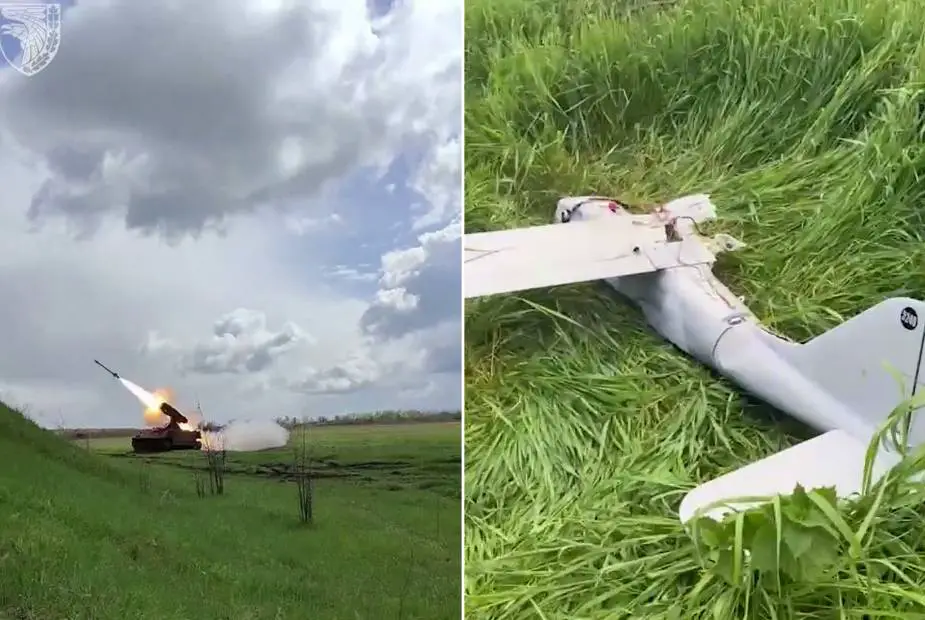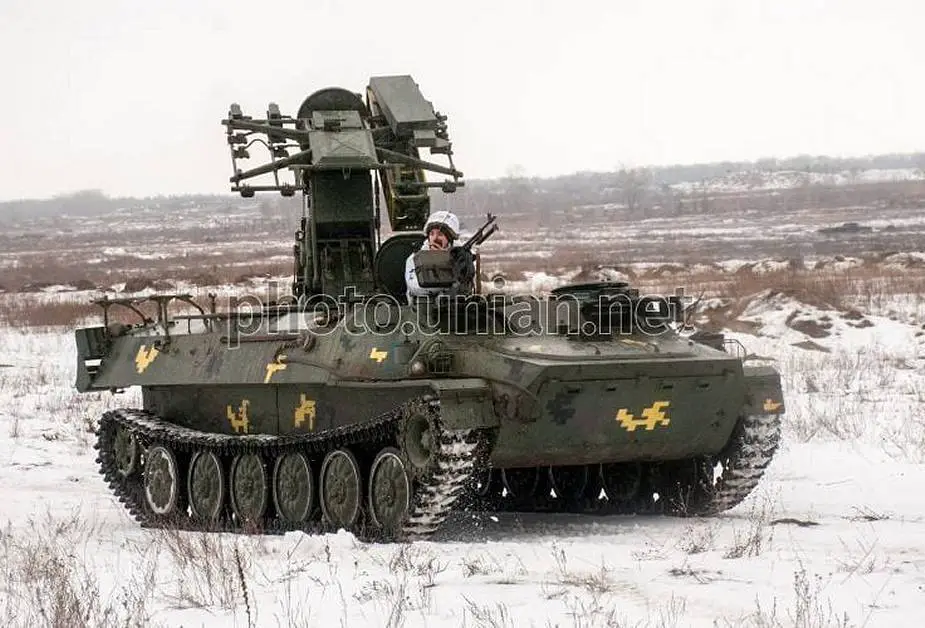- Army
- Conflicts in the world
- Israel - Iran conflict 2025
- Pakistan - India Conflict 2025
- Russia Ukraine War 2022
- Libya conflict day by day
- HAMAS - Israel War 2023
- Operation Serval in Mali French Army
- Sangaris operation Central African Republic
- Sangaris opération militaire République Centreafrique
- Ukraine - Russia conflict
- Syria conflict news
- Defence & Security Industry Technology
- Armies in the world
- Analysis Defense and Security Industry
- Conflicts in the world
- Navy
- Air
Ukrainian Strela-10 air defense system takes down advanced Russian Orlan-30 artillery drone
Released on Telegram on May 21, 2023, a dramatic video captures the moment when a Ukrainian Strela-10 air defense missile system of the 93rd Mechanized Brigade, also known as the SA-13 Gopher in NATO codification, successfully intercepts and destroys a Russian Orlan-30 drone. The UAV, representing Russia's latest generation of unmanned aerial vehicles, was deployed for reconnaissance operations and artillery fire accuracy enhancement.
Follow Army Recognition on Google News at this link

A Ukrainian army SA-10 Strela-10 air defense missile system has destroyed the latest generation of Russian-made artillery drone Orlan-30. (Picture source Telegram)
As the latest generation in Russian-made drone technology, the Orlan-30 is purpose-built to perform advanced reconnaissance operations and increase the accuracy of artillery units. Its design embodies a substantial leap in unmanned aerial technology, offering a significant upgrade over its predecessor, the Orlan-10.
The Orlan-30's key role in modern warfare extends to comprehensive aerial surveillance. The drone is capable of locating, spotting, and identifying objects in both the visible and infrared spectrum. This dual-mode capability means that it can operate effectively day or night, under various weather conditions, and even when faced with efforts to conceal or disguise potential targets.
These surveillance capabilities are facilitated by the drone's advanced payload features, which include high-resolution photo-video cameras and a cutting-edge thermal imager. The Orlan-30's cameras can capture detailed images of the ground below, while the thermal imager can detect heat signatures, a crucial element in identifying hidden or camouflaged targets.
One of the most significant features of the Orlan-30 is its laser target designator. This high-tech system can illuminate targets on the ground, which can then be hit by artillery units with a high degree of accuracy. This mechanism greatly enhances the efficiency and effectiveness of ground-based artillery units, reducing the likelihood of missed targets and collateral damage. It marks a notable improvement over the Orlan-10 model, which lacked this sophisticated laser designation capability.
Alongside the laser illumination, the Orlan-30 carries an array of payloads that includes photo-video cameras and a thermal imager. The incorporation of these devices provides high-resolution visuals and thermal imaging, offering enhanced situational awareness and target identification.

The Orlan-30 is used by Russian forces to perform advanced reconnaissance operations and increase the accuracy of artillery units. (Picture source Vitaly Kuzmin)
The combination of surveillance, reconnaissance, and laser target designation capabilities allows the Orlan-30 to serve as a force multiplier for artillery units. With the Orlan-30 in the sky, ground forces can deliver precise and devastating firepower with significantly improved accuracy. This ensures that the artillery units are not just more effective, but also more efficient, saving valuable ammunition and minimizing unintended damage.
Weighing in at a maximum take-off weight of 40 kg, the Orlan-30 is a lightweight yet robust machine. It is capable of operating within an altitude range of 300 to 3,500 meters, providing a broad scope for various mission profiles.
The Orlan-30 boasts an impressive flight speed range of 90 to 150 km/h, allowing it to quickly reach its areas of operation or return to base. Despite its high-speed capability, it doesn't compromise on endurance. With a maximum flight time of up to 6 hours, it ensures long-lasting operations.
Furthermore, the drone has an operational radius of 120 km, which can be extended to 300 km when in autonomous mode. This capability ensures that the Orlan-30 can conduct reconnaissance or strike missions deep into enemy territory without endangering manned aircraft or ground forces.
The Orlan-30 signifies a new era in Russian unmanned aerial technology. By pairing advanced reconnaissance abilities with enhanced artillery accuracy, it presents a formidable and versatile addition to modern military arsenals. As the use of drones in warfare continues to expand, the Orlan-30, with its remarkable array of features, stands out as a prime example of the potential of unmanned technology in transforming the face of modern warfare.

The Strela-10, NATO code-named SA-13 Gopher is an air defense missile system mounted on a tracked chassis armed with four-ready to fire surface-to-air missiles. (Picture source Unian.net)
The SA-13 Gopher, also known as the Strela-10, is a Soviet-made, low-to-medium altitude, short-range surface-to-air missile system. Designed to shield ground forces from airborne threats, it was developed and deployed during the late 1960s and early 1970s.
One of the key features of the SA-13 is its mobility. Built on a tracked, armored vehicle platform, it has the capacity to keep pace with advancing troops and armored units, while also providing protection against hostile aircraft. This makes it versatile, capable of operating in various terrains, and quick to relocate, minimizing the chance of being targeted by enemy counter-battery fire.
The Strela-10's primary combat capability lies in its infrared-homing missiles. These missiles, usually carried in sets of four, can engage targets at ranges of up to 5 kilometers and altitudes of around 3.5 kilometers. The infrared homing guidance system allows the missile to track and pursue targets based on their heat emissions, making it particularly effective against low-flying aircraft and helicopters.
Furthermore, the SA-13 is equipped with a search and tracking radar, which can detect and track multiple targets simultaneously. However, the system also has the ability to operate in a "passive mode," relying solely on its infrared homing missiles, which makes it less detectable to enemy radar warning receivers.
Additionally, the Strela-10 has seen multiple updates since its initial production. These have improved its electronic counter-countermeasures (ECCM) capabilities, missile performance, and lifespan, as well as added a night operation capability.
Overall, the SA-13 Gopher is a potent air defense system, designed to operate alongside ground forces, protecting them from low-level airborne threats. Its combination of mobility, versatile missile capabilities, and the ability to function effectively under a variety of conditions make it a significant factor in any theater of operations.


























